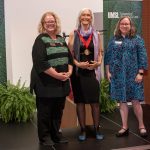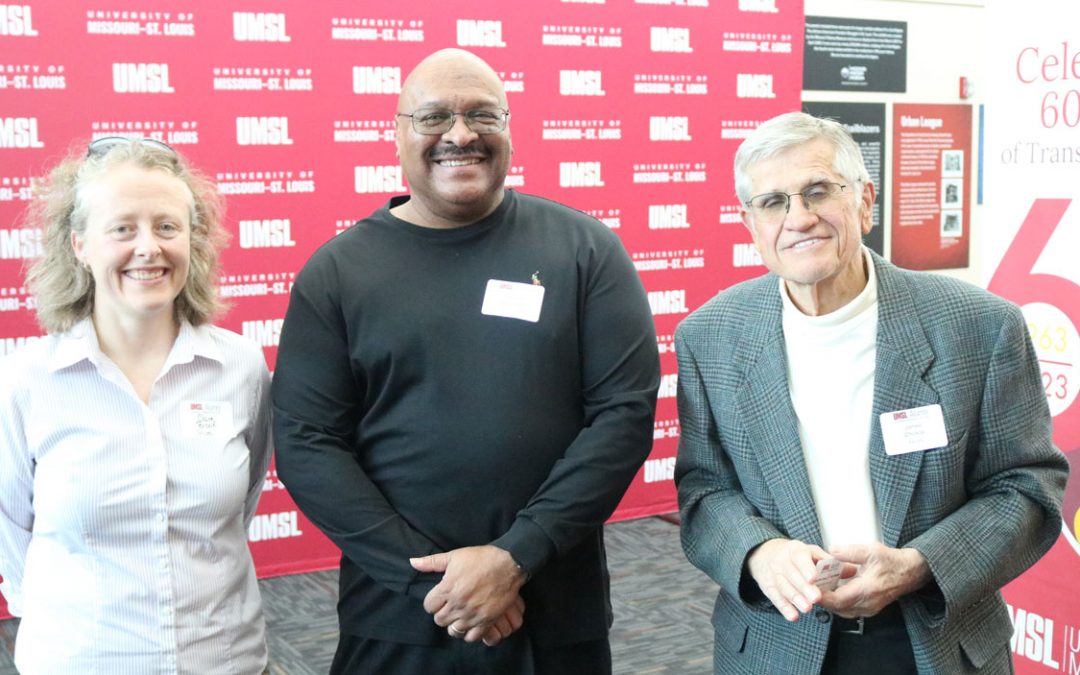
Emily Blackburn has served as the crime analysis manager at the St. Louis Metropolitan Police Department since 2012. She earned a master’s degree in criminology and criminal justice from UMSL in 2001. (Photo by August Jennewein)
Emily Blackburn remembers what it was like when she first joined the crime analysis unit at the St. Louis Metropolitan Police Department back in its infancy.
That was about 14 years ago, and before she could make heads or tails of any data on crimes committed, evidence or potential suspects, she’d have to go through an involved process to extract it from various sources, geocode it and put it on a map to begin to look for patterns.
“That process might take half an hour or so,” says Blackburn, who earned a master’s degree in criminology and criminal justice from the University of Missouri–St. Louis in 2001. “It doesn’t seem like a huge amount of time, but right now, we can do 1-2-3-4 in a row and look at different iterations almost instantaneously. That really helps our assessments.”
Blackburn, a civilian official who’s been the crime analysis unit manager since 2012, is always looking for tools that can help commanders and detectives better recognize and understand patterns in crime or connect information that will help solve their cases.
Last year, she led a team – comprised of an intelligence analyst, a systems development specialist, a programmer and an information security administrator – to build an intranet site using geospatial information system mapping software called ArcGIS Enterprise Portal, which was developed by Esri, a leading global firm in GIS, location intelligence and mapping technology. The software allowed them to create administrative, tactical, investigative and intelligence focused dashboards to help users access and easily visualize pertinent information quickly.
“We’re all used to Esri dashboards because almost all of the COVID dashboards that came out last year were Esri dashboards,” Blackburn says. “Instead of COVID case numbers by state, it’s crime by police district or city ward or that sort of thing. It’s the same principle and underlying software.”
The dashboards have helped guide decision-making in day-to-day operations. Commanders share that intelligence with officers at the start of their patrols, so they’re prepared to recognize and solve the problems they encounter.
“We’re about at maximum capacity for doing more with less, but at least then we can focus our initiatives in the right place, in the right time,” Blackburn says. “This makes it a lot quicker. We can do multiple projects at the same time.”
Building and implementing the dashboards was a big enough undertaking that Blackburn and her team won a Special Achievement in GIS Award from Esri. St. Louis was one of three police departments recognized among 109 total
awardees nationwide.
Blackburn never expected the recognition. Had she been seeking it out, she likely never would have gotten into a career that has had her working behind the scenes to support law enforcement.
“I’m happy to do this nerdy data stuff on one end,” Blackburn says, “to help advance us in other ends and meet the changing needs of the citizens and what they want out of the police department.”
This story was originally published in the fall 2021 issue of UMSL Magazine. If you have a story idea for UMSL Magazine, email magazine@umsl.edu.














